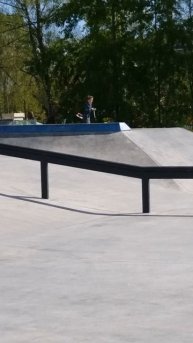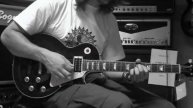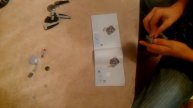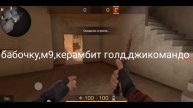Luigi Boccherini (1743-1805): 4 String Quintets
00:00 Quintet in C minor Op. 18 No.1: Allegro moderato - Grave - Minuet & Trio - Allegro assai
19:08 Quintet in F major Op. 13 No.3: Prestissimo - Largo - Tempo di minuetto appassionato & Trio - Presto
37:20 Quintet in C major Op. 25 No.3: Allegro - Larghetto - Minuet - Allegro
54:43 Largo cantabile in D major (from Quintet in A Major Op. 29 No.6)
1:00:29 Quintet in D Minor Op. 25 No.1: Larghetto, Allegro - Minuet con moto & Trio - Rondó: Allegretto
1:13:52 Andante con moto (from Quintet in C major Op. 42)
QUINTETTO BOCCHERINI
Arrigo Pelliccia & Guido Mozzato, Violins
Luigi Sagrati, Viola
Nerio Brunelli & Arturo Bonucci, Celli
Arte: El parque del Retiro con paseantes (1779), por José del Castillo (1737-1793)
Luigi Boccherini, one of the most prolific of composers, was born in Lucca, Italy, in 1743 and died in Madrid in 1805. Although he wrote over 450 works, he is known to the average music lover chiefly for a cello concerto and a minuet. In his own day Boccherini was famous both as composer and cello virtuoso, the fruit of study in Rome which began at the age of 14. When, in 1768, he reached Paris after leaving his native Lucca and making a tour of Italy, Boccherini took the French capital by storm with the publication of his Opus 1 (six string quartets) and two volumes of violin-celli trios. It was in Paris that Boccherini was persuaded by the Spanish Ambassador to try his luck in Spain. In Madrid he found a lukewarm welcome from the Prince of Asturias (later Charles IV) but achieved the friendship and backing of the Prince’s brother, the Infante Don Luis. As “compositore e virtuoso di camera di S.A.R. Don Luigi Infante d’Ispagna,” he served the Infante until the latter’s death in 1785. But between 1782-1787, he left Spain to travel in Germany, acquired a patron in Frederick William II of Prussia and composed for him, living in Berlin from 1787 to 1797. On his return to Spain, Boccherini not only found patronage scarce but was plagued with ill health. He was often in want and although he was helped for a while by Lucien Bonaparte, brother of Napoleon I and Ambassador of the French Republic at Madrid. His work was comparatively unrewarded during his lifetime (Boccherini died in poverty) and has been mostly neglected since.
Boccherini's works have several numberings: his own (in which each category of work initiates a new series of opus numbers) and those of various publishers. Those given here are the composer's own.
LARGO CANTABILE IN D MAJOR (from Quintet in A, Op. 29, No. 6). The Quintet in A is the last of six quintets composed in 1779. Its characteristically beautiful slow movement, this Largo cantabile in D, with its duple rhythm, follows an Allegro moderato and a Minuet and Trio. The first section is repeated. In the Quintet the second section leads without a break into Il Ballo Tedesco, already recorded by the Quintetto Boccherini
(Angel 45006).
QUINTET IN D MINOR, Op. 25, No. 1. A Larghetto in triple time provides a serious introduction to the first movement proper, an Allegro in common-time, with a repeated first section and a coda derived from its opening. The Minuet, con moto , with a Trio in the major leads, through inverted dominant pedals, to the final Rondo, an Allegretto, in D major and simple duple time, which includes a few bars with a Scottish snap.
QUINTET IN C MAJOR, Op. 25, No. 3. Opus 25, composed in 1778, comprises six quintets. This has four movements, the last being a modified repetition of the first, an Allegro in common-time and in the usual binary form of two repeated sections. The opening bars are unusual enough, with the 'cello scampering down from its highest register in upward appoggiature, before the first violin announces the main theme. The slow movement is a Larghetto, in the tonic minor, and also in two repeated sections. A bold Minuet in C major follows, but its trio is in C minor. The reprise of the Allegro rounds off the work.
ANDANTE CON MOTO (from Quintet in C, Op 42). The Op. 42 quintets were composed in 1789, Boccherini’s forty-sixth year. This Andante con moto, in three-four, and in the usual two repeated sections, is the first movement of a Quintet in C.
From notes by FELIX APRAHAMIAN
Видео Luigi Boccherini (1743-1805): 4 String Quintets автора Микрофонный музик
Видео Luigi Boccherini (1743-1805): 4 String Quintets автора Микрофонный музик
Информация
16 апреля 2024 г. 11:43:44
01:22:05
Похожие видео
 Новый рукоход
Новый рукоход Нека играем на Shadow Fight 2! - Mod/Hack Free (част 1)
Нека играем на Shadow Fight 2! - Mod/Hack Free (част 1) Play the Violin sheet music with Jed Wentz/ de Fesch: Concerto for 2 Flutes Op.5 No.3 in G major
Play the Violin sheet music with Jed Wentz/ de Fesch: Concerto for 2 Flutes Op.5 No.3 in G major Edvin Marton - Prince Of The Violin
Edvin Marton - Prince Of The Violin на самокате утром
на самокате утром B52 AT100 MIX
B52 AT100 MIX Вояки РТС 3 серия
Вояки РТС 3 серия Game Of Thrones Title Theme ukulele cover
Game Of Thrones Title Theme ukulele cover Обзор набора Лего 75031
Обзор набора Лего 75031 CS:GO - Фрагмувик
CS:GO - Фрагмувик Новокузнецк, Евгений Плющенко и Эдвин Мартон
Новокузнецк, Евгений Плющенко и Эдвин Мартон Air on the G String | J.S.Bach | Quarteto OSG
Air on the G String | J.S.Bach | Quarteto OSG Lobos, Heitor Villa - Estudo n°1 GUITAR TAB
Lobos, Heitor Villa - Estudo n°1 GUITAR TAB Кеш на четыре ножа
Кеш на четыре ножа Boosteroid. ICO. Криптовалюта
Boosteroid. ICO. Криптовалюта Lyon - Funambal - 2018 - Sirus - Scottish Soffan
Lyon - Funambal - 2018 - Sirus - Scottish Soffan Carulli Guitar-Op.241 Rondo in D (No.7)/BlackguitarTab
Carulli Guitar-Op.241 Rondo in D (No.7)/BlackguitarTab Бот для торговли на бирже InsightTradeBot
Бот для торговли на бирже InsightTradeBot Chilled bomb violin type beat this is a Must hear !! 🔥🔥 🔥🔥 🔥🔥 🔥
Chilled bomb violin type beat this is a Must hear !! 🔥🔥 🔥🔥 🔥🔥 🔥 ЛАЙФ СТЕША. СОБИРАЕМ ПАЗЛЫ.
ЛАЙФ СТЕША. СОБИРАЕМ ПАЗЛЫ.
